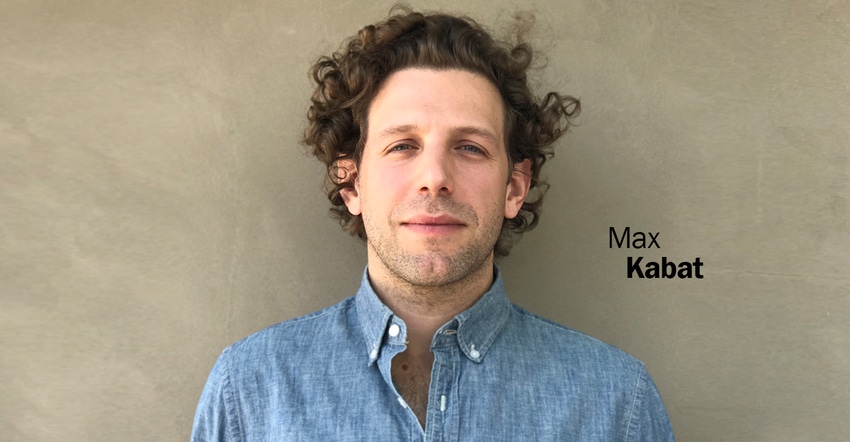The recent success of plant-based meat is quickly pushing the category towards commoditization. As the current publicly-held face, here's how Beyond Meat could use new monies to build something more than a slew of products–namely, a brand.

To: Beyond Meat
Fr: Max Kabat, Co-Founder/Growth Strategist, goodDog
Subject: Go beyond a commoditized product
Memo: It’s been over a month since that now infamous first day of trading. The coverage borders on obsession. It’s warranted. You’re the first group to go from well-funded upstart to IPO in our little natural products corner of the world. The first to make it in the foodtech wave. You're helping move society past the vegan and vegetarian trigger words. Your steadfast conviction, forward thinking and pre-public capital table of smart money investors and celebrities nailed the cultural zeitgeist moment.
But you’re not alone. Impossible. Incredible. Awesome. The names conjure similar ideas. Field Roast. LightLife. Tofurky. Morningstar. These decades-old companies are using this newfound interest to double down on brand and their business. Consumers can’t get enough of plant-based–processed or otherwise–and we can’t stop talking about it. It’s in and on everything. It’s a new way of life while at the same time being a trend. Current demand is outpacing supply, causing your competitors to short restaurants. So why might it not be the right recipe for long term success?
Building a brand instead of a commodity
Your new shareholders are betting on a day when plant-based meat is ubiquitous. To rise above this ubiquity means that the company needs to be more than a product. One that has a moat. One built on an ownable, relevant, resonant foundation. One rooted in story. One that’s about more than a retooled logo on the hat of an investor at a post-game press conference. I can’t help but wonder how you might articulate a differentiated story that doesn’t hinge on craveability, taste, being better for you and the environment or “no compromises”–all things other category players are repeating, too.
Building a brand instead of a foodservice product
Entering the foodservice game has been a boon for raising awareness while driving trial and pushing volume. From local favorites, to high-touch regionals like Bareburger, to MLB stadiums, to mass-market QSRs like Carl’s Jr. and Del Taco. Sausages and burgers. The adoption tells us a lot about the consumers want for an alternative to the status quo. But what does it tell us about you? Are consumers falling in love with what Beyond is offering, the idea of widely available options, or the experience these restaurants are hawking? Is it all being prepared and served consistently and in the ways you want? As the whole category ramps up supply and the media attention starts to fade, what’s preventing you from just being another inventory cost on a foodservice manager's profit and loss statement rather than a revenue-generating partner?
Past commodity-branded success
Turning a commodity into a brand is hard–so hard, in fact, that many have tried like all hell but few have succeeded. Organic Valley. Bob’s Red Mill. Applegate. Now, these brands are some of the largest natural and organic players on the market, but they came from pretty humble beginnings in the ‘70s and ‘80s. They’ve made their brands synonymous with the ever-expanding, better-for-you lines of products they offer when some might just look at it all as merely a CME-traded commodity. How were they able to break through? How have they told stories? How have they leveraged their unique supply chain? How have they led long-term movements for change that go beyond early-adopters and one-time triers? What have they done to unlock brand and business value?
New stakeholders, different game
In the same way that being acquired brings on different talent and needs, so does going public. Margins are now your game as the focus shifts to more immediate numbers. So, if you know that internal culture will erode because of these pressures and investors will want to extract value while you might want to live your values, how might you set the tone for patience and long-term success? What will make all the naysayers wrong and the short squeeze talks go away?
Eating to heal or to care for the planet is the easiest way to feel like you are making a difference. It’s the realization that drove many of us to work in this field. Sure, this is a more tangible and practical way to make consumers feel empowered (more so than, say, trying to get people to donate to an environmental cause in the name of Mother Earth). This more humble route has its own set of challenges, but so does the Shaq-sized expectations you now need to fill. And being first doesn’t guarantee a sustainable victory. So what does? Building a brand, not just products. Invest in a brand story. Do more than pivoting to another redesign or launching pretty creative that doesn't mean much. You risk ultimate, somewhat ironic, success—becoming a commodity just like what you’re looking to replace. We’re rooting for you and your barrier-breaking ways. Your new shareholders are, too. Invest the money and time now so you can continue to lead. We’re all watching.
Max Kabat is from goodDog, a brand consultancy that helps mostly mid-stage, founder-built, mission-driven companies grow by articulating a singular storyline then bringing it to market.
About the Author(s)
You May Also Like




